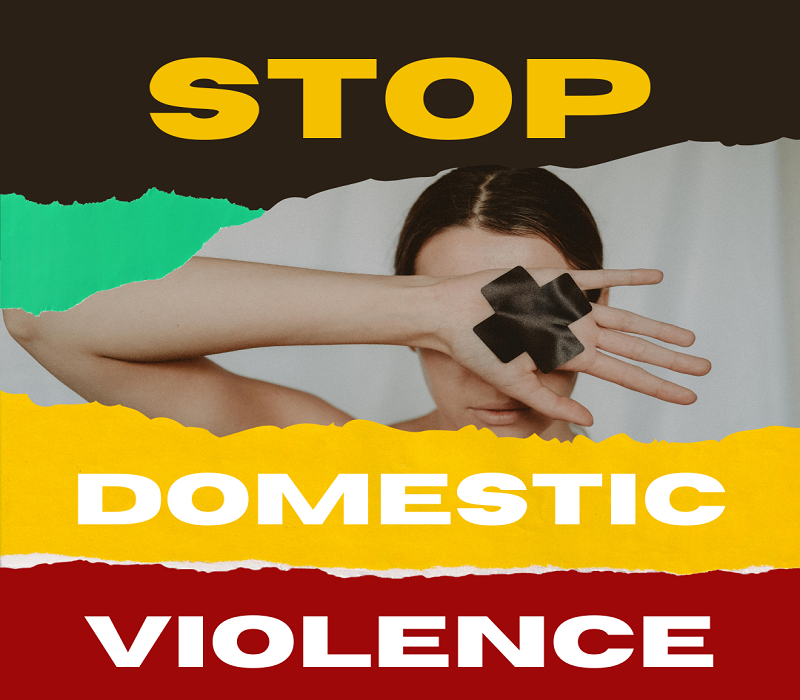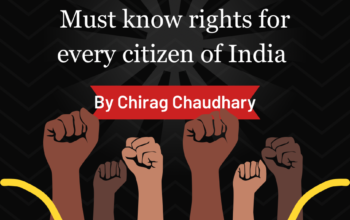The Protection of Women from Domestic Violence Act, 2005 was passed by the Indian Parliament to strengthen the protection of women’s constitutionally guaranteed rights who become victims of domestic abuse and other similar situations. The Protection of Women from Domestic Violence Act came into force on October 26, 2006. The aggrieved can seek protection against any physical, sexual, verbal, emotional abuse, or economic abuse. This law for the first time recognizes a women’s right to a violence-free home.
India has enacted the Protection of Women from Domestic Violence Act, 2005, which aims to safeguard women from domestic abuse and give them access to remedial action. The act defines domestic violence as any act, omission or commission, or conduct of the respondent that harms or injures, or endangers the health, safety, life, limb, or well-being, whether mental or physical, of the aggrieved person or tends to do so and includes causing physical abuse, sexual abuse, verbal and emotional abuse, and economic abuse. This term would also involve harassment of the woman or her family members through illegal dowry demands.
The scope of the act is comprehensive and includes any woman who is, or has been, in a domestic relationship with the respondent and who alleges to have been subjected to any act of domestic violence by the respondent. Whether two people are connected through consanguinity, marriage, or through a relationship in marriage, adoption, or are family members living together as a joint family, they are said to be in a domestic relationship if they are residing together or have previously lived together in a common household. The legislation grants protection to all women, including sisters, widows, mothers, single women, and those who live with the abuser. Domestic abuse affects women from all social backgrounds, regardless of their age, religion, caste, or status. Any person may register a complaint on behalf of the aggrieved person if the aggrieved has been subjected to domestic violence by her husband or any other person from the family including the relative of the male partner. The law specifies consequences for violating orders made according to the act, which may include imprisonment and a fine.
The object of protection under this act is to provide for effective protection of the rights of women who are victims of violence of any kind occurring within the family and to ensure that the legal system provides support to the victim against the acts of domestic violence. The act also seeks to prevent the occurrence of domestic violence and to create awareness about the issue. The act provides for a range of civil remedies, including protection orders, residence orders, monetary relief, custody orders of children, and compensation, as well as criminal sanctions for breach of protection order.
The act protects victims of domestic violence in the cases such acts of domestic violence occur. The act prevents the commission of domestic violence and takes adequate steps if such violence occurs. The act aims to implement sufficient programs and agendas for the victims of domestic violence and guarantees the recovery of such victims. The act further aims to create awareness among people about domestic violence.
The act provides the right for women to reside in their matrimonial homes or shared households without fear of violence. The act further provides medical assistance, legal aid, counseling, and other forms of support to women who are victims of domestic violence. The act provides protection officers and service providers who will help women who are victims of domestic violence. The main objective of the act is to protect the rights of women by providing them with legal recourse in cases of domestic violence.
PROCEDURE :
- Filing of complaint: A woman who has experienced domestic violence or is apprehensive of being subjected to domestic violence may file a complaint with the Magistrate. The complaint can be filed either in person or through her legal counsel, a Protection Officer, or any other person authorized by her.
- Filing of application: The woman may also apply for obtaining a protection order, a residence order, a monetary relief order, or a custody order.
- Interim Order: After receiving the complaint, the Magistrate may pass an interim order directing the respondent (the person against whom the complaint is made) to refrain from committing any act of domestic violence, evicting the respondent from the shared household, or restraining the respondent from entering any portion of the shared household.
- Service of notice: The Magistrate will then issue a notice to the respondent, directing him to file a reply to the complaint within a specific period.
- Hearing: The Magistrate will then conduct the proceedings, where both parties will be allowed to present their case and produce evidence.
- Final Order: After collecting evidence from both the parties and appreciating the same thereof, the Magistrate may pass a final order. The order may include a protection order, a residence order, a monetary relief order, or a custody order.
- Enforcement: Once the order is passed, the Protection Officer must ensure that the order is enforced. The respondent shall face consequence for violating the orders of the magistrate and can also be penalized for any breach of the protection order.
The first case under India’s Domestic Violence (DV) Act was reported in 2006. The case was called Hiral P Harsora vs Kusum Narottamdas Harsora, and it was heard by a court in Mumbai.
The case involved a woman who had been subjected to domestic violence by her husband and in-laws. She filed a complaint under the newly enacted DV Act, seeking protection and relief. The court granted her relief, and this set a precedent for future cases under the Act.
Since then, there have been numerous cases filed under the DV Act in India, and the law has been instrumental in protecting women and other victims of domestic violence. The DV Act establishes a legal framework through which victims of domestic abuse can seek protection, restitution, and other forms of relief. It recognizes that domestic violence is a serious violation of human rights.
CONCLUSION
The Protection of Women from Domestic Violence Act 2005 is a significant piece of legislation in India that aims to protect women from all forms of domestic violence. The Act recognizes the right of every woman to a life free from violence and provides for a wide range of remedies to protect women and prevent further violence. In addition to providing for legal remedies, the act also creates a duty on the part of the State to take measures to prevent domestic violence and to provide support services to victims of domestic violence.
The Protection of Women from Domestic Violence Act 2005 is an important legal tool in the fight against domestic violence in India. However, its effectiveness depends on effective implementation, awareness-raising, and the willingness of victims to come forward and seek help. It is important for all stakeholders, including the government, civil society organizations, and the general public, to work together to ensure that the act is implemented effectively and that domestic violence victims get the safety and protection they require.
This article is written by Shailaja Kurra. Shailaja is a 4th year law student from Padala Rama Reddi Law College, Hyderabad. For feedback relating to this article, she may be reached at shailajakurra3120@gmail.com.
If you are also a law student or legal professional and wish to contribute to the website, you may send your submission at nyayconnection@gmail.com.




